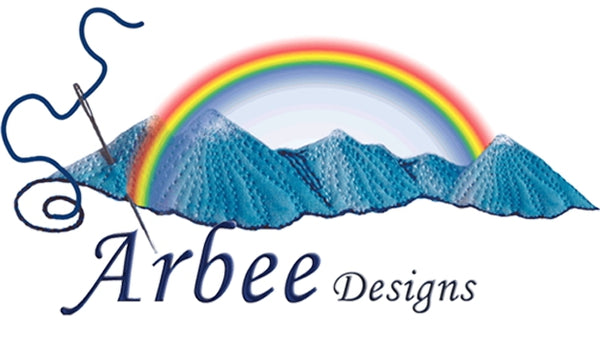Color and Quilting
Colors and how they affect quilting
When we admire a quilt or pattern, it can be determined that the color plays a big part in the decision to like or dislike it. The use of contrasts or complementary colors can make or break a design. To understand this, we need to look closely at what colors are.
Color is the term we use for the entire subject of color. This is broken down into the following terms to help us understand the different aspects.
Primary Colors: We have three primary colors, blue, yellow and red. All other colors can be made from these primary colors. Often people think that green is a primary color, but it is not because it is made from blue and yellow.
Secondary Colors: The secondary colors are purple, green and orange. These are formed when you mix equal amounts of the primary colors. See my basic color wheel.
When you mix different amounts of the primary colors together, you start creating the "in between" colors. For example, I work with a lot of green for my flower quilts and landscapes. Often I will pick green fabrics to work with and one will jump right out telling me it doesn't belong with the group. This happens when the greens I am using may be tending towards the blue side of the color wheel and the odd ball is tending towards the yellow side.
Complementary Colors are a pair of colors opposite on the color wheel. For example, blue and orange, or yellow-green (color between yellow and green) and red-purple (color between red and purple . These pairs can work extremely well together and can make a very dramatic quilt.
Other color terms include hue, value, tint and shade. The hue is the name of the color, blue, red-orange, green etc. Value is the lightness or darkness of any color. Tint is the color you get when you mix white with a pure color, these colors have a high value. Shade is the color you get when you mix black with a pure color, these colors have a low value.
Warm and Cool colors. Warm colors are those on the red - orange - yellow side of the color wheel, while cool colors are on the purple - blue - green side. We can often warm up or cool down a room, using colors. Here are two quilts to compare. The red/yellow one projects fire and heat while the blue one projects icy cool water, yet there is no visual picture that tells us this, it is purely the color.
Knowing about the color wheel and its colors, can certainly help when choosing fabrics for a quilt. Warm and cool colors can also have an impact on our decision. A fun exercise to try is collecting small samples of fabric from your stash and seeing where you can place them in the color wheel. You will likely find you have a lot of fabrics for one side of the color wheel and much fewer on the other. Check my fabric wheel out.
 |

|
© Copyright 2012- Arbee Designs. All Rights Reserved. This content is copyrighted by the respective teachers or authors of the article/lesson presented on this page. Unless otherwise indicated, all other content is the property of Arbee Designs. You may not make copies of the material for others without the written permission of Arbee Designs.
